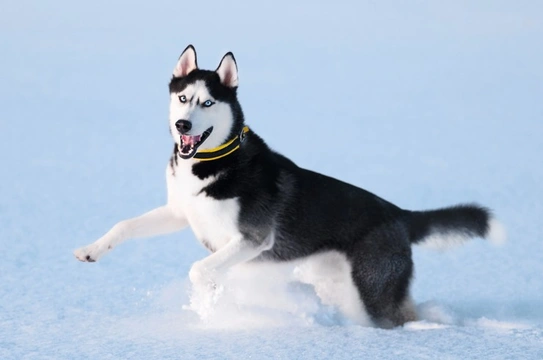
Seven traits that demonstrate why the Siberian Husky is designed for cold weather
As the name implies, the Siberian husky is a real cold weather dog, and nothing that the worst of the British weather throws at them can phase them! Like certain other dogs of the spitz type that hail from colder climates, everything about the Siberian husky is designed to help them to thrive at freezing temperatures with few resources and an inhospitable wind whirling around them!
Some of these same traits that make the husky such a good fit for life in cold places are things that can be among the main inconveniences of owning the breed in a domestic setting too-such as their propensity to blow their coats and shed hair prolifically over a short period of time a couple of times a year. This, like many of the other main traits of the breed can all be explained when you measure them up against life in their home climate.
In this article, we will share seven traits of the Siberian husky that demonstrate why they are so well designed for cold weather. Read on to learn more.
Their dense, double coats
The first thing that most people notice about huskies-after they have gotten over their wolfish appearance-is the fact that their coats are so very thick, to the point that you can get your fingers right down to the skin and will be unable to pull them through all the hair with ease!
The coat is composed of a soft, short undercoat that traps heat next to the skin, covered by a longer layer of guard hairs that stop the wind from biting through to the skin, and means that snow and water just run right off them, without penetrating the lower undercoat.
This allows the husky to keep warm whatever the weather, because they have a very economical method of maintaining their core temperature.
Their propensity to shed heavily
You will become all too aware of just how much fur is on your husky the first time they go through a major shed, which is also known as blowing the coat. In the UK, this usually happens twice a year as the seasons change in spring and autumn, in order for them to stay comfortable through the different seasons.
In the colder climates that the husky evolved to suit, the warmer weeks of the year are usually short and over quickly. This means that the breed’s propensity to shed a lot in a short space of time, and end up in the right coat for the season, makes them highly adaptable to managing in different climates.
The shape and structure of their eyes
Like most dogs of the spitz type, the husky has almond shaped rather than round eyes, with thick, long eyelashes. The shape of their eyes makes it easier for them to keep their eyes squinted for hours at a time during a snow storm, and the lashes around them work to catch snowflakes and freezing rain, to stop them from getting into the dog’s eyes.
Their paws are designed for the cold
Huskies are designed for sledding and endurance running on surfaces such as snow and ice, and they can get up a good lick of speed on such surfaces too! This is assisted by the shape and design of their paws, which are wide enough to spread the dog’s weight evenly so that they do not sink into snow, and they also have a lot of hair between their toes and footpads to keep their feet from freezing.
Their curved, fluffy tails
The curved, erect tail is one of the most telling indications of dogs of the spitz type, and this exact design evolved for a very good reason! You may have seen cats sleeping with their noses tucked into their tails, and you will often spot the husky sleeping in much the same way, as this long, fluffy curved tail helps to keep their noses warm, and warm up the air that they inhale when sleeping in the cold.
Their short, hairy ears
The ears of the husky are actually slightly on the small size when compared with the dog’s other proportions, and they are also very thick with fur on the inside. The smaller size of their ears makes them easier to keep warm in biting wind, and the thick fur inside of them protects the delicate ear canal from snow, ice and other weather conditions.
Their economical energy conversion rate!
Like all dogs, the Siberian husky tends to be fairly undiscerning when it comes to food, and they will be as opportunistic about begging and scavenging as the next dog! However, like for like the Siberian husky is actually quite economical to feed when compared to other dogs of a similar size, and they can get a lot of energy out of a relatively low amount of calories.
This means that when they are sledding and running all day, they can do so on a full stomach and not have to stop for lunch in order to keep them from flagging!



